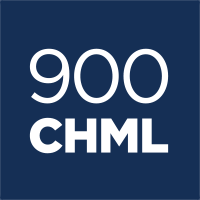Months after the coronavirus pandemic forced the cancellation of the Ontario Hockey League season and prevented the 2020 Canadian Football League season from kicking off, there are worries that both leagues are no closer to returning to action.

The OHL shut down in March just as its teams were getting ready to ramp up for the playoffs, and while the league has said that it wants to begin its 2020-21 season in December, there are significant hurdles that will need to be cleared.
The same roadblocks that prevented the CFL from playing this year still exist, and they will likely come into play when the spring of 2021 rolls around if pandemic-related restrictions remain in place.
Will OHL teams be allowed to play in front of fans, and if not, will the league and the 20 team owners be able to withstand the financial impact?
The same goes for the CFL, and it is on a much greater scale because pro football players get paid to play, unlike those in junior hockey.
Earlier this month, Lisa MacLeod, Ontario’s minister of heritage, sport, tourism and culture industries, said the OHL wouldn’t return to action if bodychecking and other physical contact was still allowed.
MacLeod hasn’t come out and said it, but wouldn’t the same stipulations around body contact apply to the CFL’s Ontario markets in Hamilton, Toronto and Ottawa?
One of the most delicate issues the OHL faces lies across the border, where the Erie Otters, Flint Firebirds and Saginaw Spirit reside.
With the ban on non-essential travel at the Canada-U.S. border in effect until at least Nov. 21, and with no end in sight to its multiple extensions, how will the league proceed with its American contingent?
Remember, the vast majority of OHL players are still in high school, and yes, they can certainly learn remotely, but where are they going to live?
Forget an NHL or NBA type bubble, that is way too costly for the OHL. And with rising COVID-19 case counts across the country, I don’t envision enough billets agreeing to play mom and dad for a season.
The CFL’s road back to the gridiron is just as bumpy.
If there is no government funding on the table, and fans are forbidden from hootin’ and hollerin’ from the stands, isn’t the league stuck in neutral?
The CFL’s bubble option seemed to have shown some promise, but that was for a nine game season not a full 18-game slate that would obviously double the already daunting price tag for a league with little money stashed away.
Then there is the question of potentially revamping the collective bargaining agreement with the CFL Players’ Association, which always seems to be a contentious and painstaking process.
Add the return of the XFL (for a third time) in 2020 and the number of American players who will travel to Canada to play for a portion of what they can earn closer to home will become depleted.
Neither league has presented any sort of plan as to how they plan to proceed which has left fans of both sports wondering, and worrying, what happens next.
Rick Zamperin is the assistant program, news and senior sports director at Global News Radio 900 CHML.
- ‘Shock and disbelief’ after Manitoba school trustee’s Indigenous comments
- Invasive strep: ‘Don’t wait’ to seek care, N.S. woman warns on long road to recovery
- ‘Super lice’ are becoming more resistant to chemical shampoos. What to use instead
- Canadian food banks are on the brink: ‘This is not a sustainable situation’









Comments